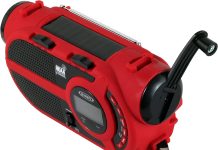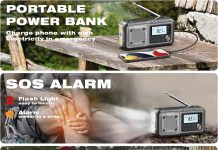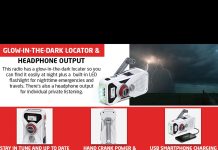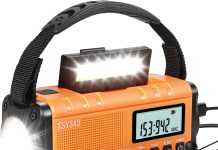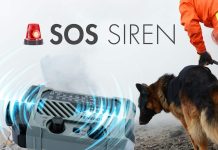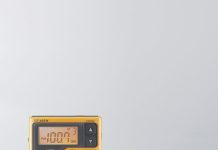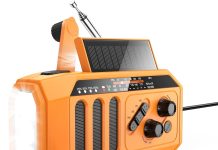Weather alert radios are devices designed to receive alerts from the National Oceanic and Atmospheric Administration (NOAA) regarding severe weather conditions. These radios are an essential tool for anyone living in an area prone to severe weather events such as tornadoes, hurricanes, and flash floods. They are also helpful for people who enjoy outdoor activities such as hiking, camping, and fishing.
A weather alert radio can be programmed to receive alerts for specific geographic areas so you only receive relevant alerts to your location. These alerts can include information about severe thunderstorms, tornadoes, flash floods, and other weather-related emergencies. When an alert is received, the radio will sound an alarm and provide information about the type of emergency and the appropriate actions to take.
In addition to receiving alerts from NOAA, many weather alert radios include other features such as AM/FM radio, a built-in flashlight, and the ability to charge your cell phone. Some models are solar-powered or hand-cranked, making them ideal for use during power outages or other emergencies. Overall, a weather alert radio is essential for anyone who wants to stay informed and prepared in severe weather.
A weather radio is the only medium that will work when power is out and keep you noted with weather alerts and news.
Stay noticed with a NOAA weather radio. Furthermore, weather radios usually have backup power sources, making them reliable mediums for receiving alerts.
Review contents
Understanding Weather Alert Radios
Weather Alert Radios are essential tools for staying informed and prepared during severe weather and hazardous conditions. In this section, we will discuss their definition and purpose, as well as their history and development.
Definition and Purpose
A weather alert radio is a specialized radio receiver designed to receive emergency broadcasts from the National Weather Service (N.W.S.) and other local emergency management agencies. These radios automatically sound an alarm and provide lifesaving information in the event of severe weather, natural disasters, and other emergencies.
The purpose of weather alert radios is to provide early warnings and lifesaving information to the public in the event of severe weather. These radios are designed to bridge the gap between when a weather event is detected and when it impacts a community. By providing early warnings and accurate information, weather alert radios can help save lives and reduce property damage.
History and Development
The National Oceanic and Atmospheric Administration (NOAA) Weather Radio system was established in the 1970s to provide continuous weather information to the public. The system was initially designed to broadcast weather information on a single frequency, but it has since evolved to include multiple frequencies and channels.
Today, weather alert radios are essential for staying informed and prepared during severe weather and other emergencies. These radios are available in various models and styles, including handheld, desktop, and portable units. Some models even include additional features such as AM/FM radio, flashlight, and cell phone charging capabilities.
In conclusion, weather alert radios are essential for staying informed and prepared during severe weather and other emergencies. These radios can help save lives and reduce property damage by providing early warnings and accurate information.
Types of Weather Alert Radios
There are three main types: desktop weather alert radios, portable, and specialty.
Desktop Weather Radios
Desktop weather radios are designed to stay in one place, typically in a home or office. They are usually AC-powered but may also have battery backup. One popular model is the Midland WR120, which is simple to set up and has 60 different programmable alerts.
Portable Weather Radios
Portable weather radios are designed to be carried with you and are typically battery-powered. Many models also have hand-crank and solar power options for recharging the battery in an emergency. One popular model is the Eton Sidekick, which is compact and lightweight, making it easy to carry in a backpack or purse.
Specialty Weather Radios
Specialty weather radios are designed for specific purposes, such as marine use or outdoor activities like camping and hiking. One example is the FosPower Emergency Solar Hand Crank Portable Radio, designed for outdoor use with a built-in flashlight and S.O.S. alarm.
No matter which type of weather alert radio you choose, it’s essential to ensure it has the features you need and is reliable in an emergency. Always read reviews and do your research before making a purchase.
Key Features to Consider
When selecting a weather alert radio, several key features should be considered. These features can help ensure that you receive timely and accurate weather alerts and provide additional functions that can be useful in emergency situations.
Alert Types
One of the most essential features to consider when selecting a weather alert radio is the types of alerts it can receive. The most common alerts include NOAA weather and alerts for other emergencies, such as AMBER and civil emergency messages.
Another essential feature to consider is the ability to receive alerts for specific geographic areas. This can be particularly useful for those living in areas prone to severe weather, as it allows them to receive alerts for their location.
Power Options
Another important consideration when selecting a weather alert radio is the power source. Many weather alert radios have various power options, including battery backup, solar panels, and USB charging ports.
It is important to consider the radio’s battery life and the charging options available. Some radios may have a longer battery life but limited charging options, while others may have shorter battery life but more versatile charging options.
Additional Functions
In addition to receiving weather alerts, many radios come with additional functions that can be useful in emergencies. These functions may include a built-in flashlight, clock, and alarm clock.
Considering these additional functions when selecting a weather alert radio is essential, as they can provide added convenience and functionality in emergencies.
When selecting a weather alert radio, it is essential to consider the alert types, power options, and additional functions available. By selecting a radio with these features, you can ensure you are prepared for any emergency.
Weather Alert Radio Technology
When it comes to staying safe during severe weather conditions, a weather alert radio is essential. In this section, we will discuss the technology behind weather alert radios.
Signal and Frequency
Weather alert radios receive signals from the National Oceanic and Atmospheric Administration (NOAA) Weather Radio All Hazards (N.W.R.) network. This network broadcasts on seven frequencies in the Very High Frequency (V.H.F.) public service band, ranging from 162.400 to 162.550 megahertz (MHz). These frequencies are reserved exclusively for weather broadcasts.
SAME Technology
Specific Area Message Encoding (SAME) technology allows weather alert radios to receive alerts for a specific geographic area. This technology uses digital codes to identify the area for which the alert is intended. SAME technology benefits people living in areas prone to severe weather conditions.
Connectivity and Programming
Weather alert radios can be connected to a power source using an A.C. adapter or batteries. It is recommended that both power sources be used for backup purposes. Programming a weather alert radio is simple: Select the appropriate channels and SAME codes for the desired area.
In summary, weather alert radios use specific frequencies to receive alerts from the NOAA NWR network. SAME technology allows for targeted alerts for specific geographic areas, making it easier for people to stay informed about the weather conditions in their area. Programming the radio is simple, and batteries or an A.C. adapter can power it.
Setting Up Your Weather Alert Radio
When setting up a weather alert radio, there are a few key steps to ensure you are prepared for severe weather. This section will cover the initial setup and testing of your weather alert radio, as well as programming locations and alerts.
Initial Setup and Testing
When you first get your weather alert radio, it is essential to ensure it is set up correctly and working properly. Start by reading the user manual carefully and following the instructions for setting up the radio. Ensure the radio is plugged in and turned on and the antenna is fully extended.
Next, you will want to test the radio to ensure it receives alerts correctly. Most weather alert radios have a built-in testing feature that allows you to check that the radio works correctly. Follow the instructions in the user manual to test the radio. If the test is successful, you can be confident that your radio is ready to receive alerts.
Programming Locations and Alerts
Once your weather alert radio is set up and working correctly, you must program it with your location and the alerts you want to receive. Most weather alert radios use the Specific Area Message Encoding (SAME) system to receive alerts for specific locations. To program your radio, you must know the SAME code for your location.
To find the SAME code for your location, visit the National Oceanic and Atmospheric Administration (NOAA) website. Once you have the code, you can program it into your weather alert radio using the instructions in the user manual.
In addition to programming your location, you can also program the types of alerts you want to receive. Most weather alert radios allow you to choose which alerts you want to receive, such as severe weather warnings or trip-specific alerts. Follow the instructions in the user manual to program your radio with the alerts you want to receive.
By following these steps, you can be confident that your weather alert radio is set up and ready to keep you safe during severe weather.
Practical Applications
Weather alert radios have a wide range of practical applications, making them essential for personal safety, outdoor activities, and emergency preparedness. Here are some of the most common practical applications of weather alert radios:
Home and Family Safety
Weather alert radios are an essential tool for home and family safety. They can provide early warnings for severe weather events like tornadoes, hurricanes, floods, and earthquakes. We can take necessary precautions to protect ourselves and our loved ones by receiving these alerts.
Installing a weather alert radio in our homes can help us stay informed about severe weather conditions. We can program the radio to receive alerts for specific locations and types of events. Additionally, we can regularly test our weather alert radios to ensure they are in good working condition.
Outdoor Activities and Travel
Weather alert radios are also helpful for outdoor activities and travel. Whether camping, hiking, or boating, they can provide up-to-date weather information to help us make informed decisions about our activities.
For example, if we plan a camping trip, we can use a weather alert radio to monitor weather conditions in the area. We can adjust our plans to ensure our safety if severe weather is expected. Similarly, if we travel by car, we can use a weather alert radio to monitor weather conditions along our route and make necessary adjustments to our travel plans.
Emergency Preparedness
Weather alert radios are an essential component of any emergency preparedness kit. Traditional communication channels may be disrupted in the event of a natural disaster, such as a hurricane or earthquake. Weather alert radios can provide critical information about the situation and help us stay informed about evacuation orders, shelter locations, and other essential details.
When preparing an emergency kit, including a weather alert radio with backup batteries is essential. We should also program the radio to receive alerts for our specific location and the events most likely occur in our area. Doing so can ensure that we are prepared for any emergency.
Weather alert radios are valuable tools for personal safety, outdoor activities, and emergency preparedness. By staying informed about weather conditions and other potential hazards, we can take necessary precautions to protect ourselves and our loved ones.
Maintenance and Troubleshooting
Weather alert radios are critical tools for keeping us informed about hazardous weather conditions. However, like any other electronic device, they require proper maintenance and care to function effectively. In this section, we will discuss some common maintenance and troubleshooting tips for keeping your weather alert radio in good working condition.
Battery and Power Maintenance
One of the most crucial aspects of maintaining a weather alert radio is ensuring that the device has sufficient battery power. We recommend checking the batteries regularly and replacing them as needed. It is also essential to keep spare batteries on hand in case of power outages.
Additionally, we suggest using high-quality batteries and avoiding rechargeable batteries. Rechargeable batteries may not provide adequate power to the radio, and their capacity may diminish over time.
Signal and Reception Issues
Signal and reception issues can affect the audio quality of your weather alert radio. To ensure you receive clear and accurate alerts, we recommend positioning the radio in an open area and away from obstructions.
If you are experiencing signal and reception issues, try moving the radio to a different location or adjusting the antenna. You can also try reprogramming the radio to receive alerts from a different station.
Durability and Longevity
Weather alert radios are designed to withstand harsh weather conditions for many years. However, proper care is essential to ensure their longevity.
When unused, we suggest storing the radio in a dry and cool place. Avoid exposing it to extreme temperatures or direct sunlight. Additionally, we recommend cleaning the radio regularly with a soft cloth to prevent dust and dirt buildup.
In conclusion, proper maintenance and troubleshooting are essential to keep your weather alert radio functioning effectively. By following these tips, you can ensure that your radio is always ready to provide accurate and timely alerts, even when other communication channels are out of service.
Choosing the Right Weather Alert Radio
When choosing the right weather alert radio, there are a few factors to consider. We recommend taking into account the following:
Factors to Consider
- Alert methods: Different radios may use various alert methods. Some use audible alarms, while others provide visual and text alerts. Choose one that suits your preferences.
- S.A.M.E. technology: Look for radio with Specific Area Message Encoding (S.A.M.E.) technology, which allows you to program the radio to receive alerts for your specific location.
- Battery life: Consider the radio’s battery life, especially if you plan to take it with you on outdoor activities or in case of power outages.
- Portability: If you plan to take the radio on the go, consider its size and Weight. Some models are designed to be compact and lightweight, making them easy to carry in a backpack or purse.
- Affordability: While some weather alert radios can be expensive, affordable options are available that still offer reliable weather alerts.
Recommended Models and Brands
Based on our research and customer reviews, we recommend the following models and brands:
- Midland ER310: This model is famous for its long battery life, multiple power options, and S.A.M.E. technology. It also features an S.O.S. flashlight beacon and a built-in USB port for charging other devices.
- Midland WR400: The WR400 is a high-tech weather alert device that automatically scans all seven NOAA frequencies until it locks onto the one with the strongest signal. It can also scan S.A.M.E. frequencies and has a large LCD for easy reading.
- Midland ER210: The ER210 is another popular Midland weather alert radio. It features S.A.M.E. technology, a long battery life, and multiple power options. It also has an S.O.S. flashlight beacon and a built-in USB port for charging other devices.
- Runningsnail MD-090P: This affordable option is great for those on a budget. It features S.A.M.E. technology, a built-in flashlight, and a compact design that makes it easy to take on the go.
- Value: Finding a model that offers good value for the price is essential for weather alert radios. Consider the most important features to you and compare models to find the best value for your needs.
Choose a weather alert radio that meets your needs and preferences. Consider factors such as alert methods, S.A.M.E. technology, battery life, portability, and affordability to find a model that will keep you informed and safe during severe weather events.
Additional Resources
Several resources are available online and offline if you want to learn more about weather alert radios. Here are a few resources that we recommend:
NOAA and N.W.S. Online Information
The National Oceanic and Atmospheric Administration (NOAA) and the National Weather Service (N.W.S.) offer extensive information about weather alert radios on their websites. These include detailed information about the technology behind them, how to set them up and use them, and how to interpret the alerts they broadcast.
NOAA’s website also provides information about the various weather alerts that can be broadcast, including severe weather warnings, watches, and advisories. You can also find information about how to program your weather alert radio to receive alerts for your specific location.
Community and Online Forums
Another excellent resource for learning about weather alert radios is online forums and communities. These forums are a great place to ask questions, get advice, and share your experiences with other weather enthusiasts and experts.
Some popular online forums for weather alert radio enthusiasts include the Weather Watcher Live Forum and the Weather Underground Community. These forums are great places to connect with other weather enthusiasts and learn more about using your weather alert radio effectively.
In addition to online forums, local community groups or clubs may be dedicated to weather watching and emergency preparedness. These groups can be an excellent resource for learning about weather alert radios and other emergency communication technologies.
Many resources are available to help you learn more about weather alert radios and how to use them effectively. Whether you prefer to learn online or offline, plenty of options are available to help you stay informed and prepared for severe weather events.
Everything You Need To Know About Weather Radios
News is redirected to the radios as soon as it is sent from the NOAA National Oceanic and Atmospheric Administration, 24 hours a day, seven days a week.
Modern weather radios have technology that automatically turns on when a new alert comes.
Radio covers the standard AM and F.M. broadcast bands and weather radios in available and running countries.
Also, the basic shortwave radio coverage is less common on emergency radios when local radio is unavailable.
What to consider when buying a weather radio
Purpose – decide what purpose of the radio you need.
Decide whether your radio is indoor or outdoor, just for outdoor activity or for home or office like standard radio.
Notifications – some devices only offer emergency weather announcements, while others provide emergency and public statements.
Different radios provide different bands, so choosing the radio depending on your needs is essential.
Alerts: This feature allows the device to remain silent and sound an alarm when weather warnings are on the program.
Some radios allow you to set weather warnings on the specific county radio channel.
Some radios have an external port and additional antenna for better signal reception.
Features – audible alerts. Some high-end models have multiple tones.
Durability is paramount if you use the radio when power is out or use the radio for outdoor activity.
Power source – every weather radio is made to work on the batteries or the A.C. adapter.
Portable models work with the hand-cranked feature built into the radio. Power backup options are always a good idea.
Advanced functions—Weather radios have extra features that make some stand out in outdoor or natural disaster situations.
Some have S.O.S. signal batteries. Some have USB chargers for devices, easy access tuning options, and special alerts for body-disabled persons.
Cost and warranty – prices of weather radios vary from tens to hundreds of dollars.
The price depends on the features that you would like to have on the device.
ALERTS – RADIO – National Weather Service
Size and Weight significantly depend on where you want to use your weather radio.
If the radio is used, indoor size and Weight are unimportant.
If you want to use the radio outdoors, find a smaller, lighter device.
Many weather radios are pocket-sized so that you can take them with you.
There are two types of weather radio receivers: home, stationary, and portable.
Portable models commonly offer extra features that make them useful in emergency moments.
Some weather radios are hand-crank-powered. Some are mainly electrical, and others use batteries when power is out.
Moreover, the weather radio’s night vision feature lets you see it even in the dark.
This is useful for emergency actions. High-end special weather radios for rescue actions have a night vision feature.
Weather shield feature – some weather radios have rugged construction for shield protection.
A shield will protect from high and low temperatures, and the device can be waterproof.
Alert blocking will allow you to turn off the alarm system for non-life-threatening warnings.
This feature allows you to filter what your radio will receive and what will not.
Newer weather radio receivers include visual alerting elements like multicolored L.E.D. indicator lights, which allow you to use external devices like pillow vibrators, strobe lights, bed shakers, loud sirens, and much more plugged into an accessory USB port to help you alert your body and disabled persons.
A weather alert radio band application for smart devices
For places not under unstable weather and power losses, you use weather alert radios to be informed and outdoor activities like hiking, mountain climbing, camping, etc.
If you don’t depend on power and don’t use it for emergency weather alerts, a radio band application is the right choice.
That application for weather alert radio combined with G.P.S., temperature, and other functions makes your mobile device a unique outdoor gadget.
Also, weather alert radios come in various types, such as stationary desktop types or smaller portable versions and pocket sizes.
Read Next – Midland Weather Radio (Model ER210)
The Best Emergency Weather Radios | Weather Station Guide
Weather radios can have primary and extended options for professional rescue needs. Some weather radios are hand-crank-powered, some are mainly electrical, and others use batteries when power is out.
Tiny handheld weather receivers do not support the same alert type encoding. Still, they will help hikers and explorers listen to weather reports without taking a bit of radio based on the hike.
Some weather receivers have a built-in flashlight and USB port for charging.
Depending on your needs, find the one that will fit you and have everything you need in emergency cases or some hiking adventure.
Pay attention to the battery working life and radio stations that catch.
Some radios can even send S.O.S. to call for help or get alarmed if something happens.
Read Next – Is the weather radio AM or F.M.?
Midland – Why You Should Own a Weather Alert Radio
Read Next – Weather Alert Radio
Frequently Asked Questions
How does weather alert radios function?
Weather alert radios are designed to receive National Oceanic and Atmospheric Administration (NOAA) alerts and provide you with up-to-date weather information. These radios broadcast alerts for specific geographic areas using Specific Area Message Encoding (SAME) technology. They also have a tone alarm feature that will activate the radio even in standby mode.
What distinguishes a weather radio from a conventional radio?
A weather radio is specifically designed to receive weather alerts and provide you with up-to-date weather information. Unlike a conventional radio, a weather radio is equipped with SAME technology and can receive alerts for specific geographic areas. Additionally, weather radios are designed to emit a loud, distinctive tone alarm when an alert is broadcasted.
Why does a weather radio emit beeping sounds?
Weather radios emit beeping sounds to alert you of an incoming weather alert. These beeping sounds are designed to be loud and distinctive, so you can hear them even if you are asleep. The tone alarm feature is handy at night when you cannot hear the radio’s regular broadcasts.
Which weather radio is recommended for tornado warnings?
When it comes to tornado warnings, we recommend the Midland WR120EZ. This weather radio has SAME technology and can receive alerts for specific geographic areas. It also has a tone alarm feature that will activate the radio even in standby mode. The Midland WR120EZ has a built-in battery backup, so it will continue to work even if the power goes out.
How can I find the correct frequencies for NOAA Weather Radio?
You can find the correct frequencies for NOAA Weather Radio by visiting the National Weather Service website. NOAA Weather Radio stations broadcast on one of seven frequencies in the V.H.F. Public Service band: 162.400 megahertz (MHz), 162.425 MHz, 162.450 MHz, 162.475 MHz, 162.500 MHz, 162.525 MHz, and 162.550 MHz. While some older Weather Radio receivers will only have three frequencies (162.400, 162.475, and 162.550), any receiver sold today should have all seven frequencies.
What should I look for when choosing a weather alert radio?
When choosing a weather alert radio, look for one equipped with the SAME technology and capable of receiving alerts for specific geographic areas. Additionally, make sure the radio has a tone alarm feature that will activate it even when it is in standby mode. Other features include a built-in battery backup, the ability to receive alerts for multiple weather events, and the option to program the radio for multiple locations.
Midland - WR120B/WR120EZ - NOAA Emergency Weather Alert Radio - S.A.M.E. Localized Programming, Trilingual Display, 60+ Emergency Alerts, & Alarm Clock (WR120B - Box Packaging)
$31.81 in stock
3 used from $31.48
American Red Cross Emergency NOAA Weather Radio with USB Smartphone Charger, LED Flashlight & Red Beacon
$42.33 in stock
4 used from $39.03
[Upgraded Version] RunningSnail Emergency Hand Crank Self Powered AM/FM NOAA Solar Weather Radio with LED Flashlight, 1000mAh Power Bank for iPhone/Smart Phone
$18.90 in stock
NOAA Weather Radio - Emergency NOAA/AM/FM Battery Operated Portable Radio with Best Reception and Longest Lasting Transistor. Powered by 2 AA Battery with Mono Headphone Socket, by Vondior (Silver)
RunningSnail Solar Crank NOAA Weather Radio for Emergency with AM/FM, Flashlight, Reading Lamp and 2000mAh Power Bank
$29.90 in stock
Eton Ultimate Camping AM/FM/NOAA Radio with S.A.M.E Technology, Smartphone Charging, Bluetooth, Giant Ambient Light and Solar Panel, NFRX5SIDEKICK
$99.99 in stock
1 used from $91.07
FosPower Emergency Solar Hand Crank Portable Radio, NOAA Weather Radio for Household and Outdoor Emergency with AM/FM, LED Flashlight, Reading Lamp, 2000mAh Power Bank USB Charger and SOS Alarm
$29.99 in stock
Rocam Emergency Hand Crank Portable Radio Solar Power AM/FM/SW/NOAA Weather Radio with 2000mAh Power Bank Phone Charger, 3W LED Flashlight, Reading Lamp, 7 Weather Band, SOS Alarm and Compass (Green)
$35.99 in stock
Kaito KA500 5-way Powered Solar Power,Dynamo Crank, Wind Up Emergency AM/FM/SW/NOAA Weather Alert Radio with Flashlight,Reading Lamp and Cellphone Charger, Yellow
4 used from $47.97

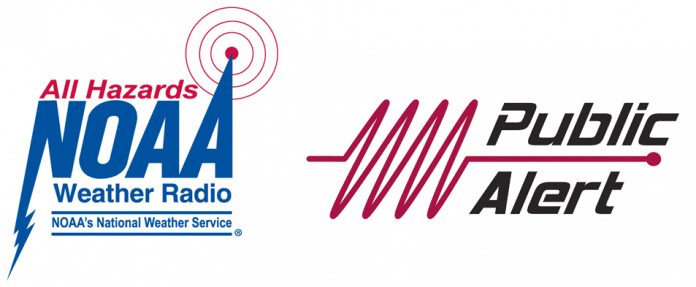
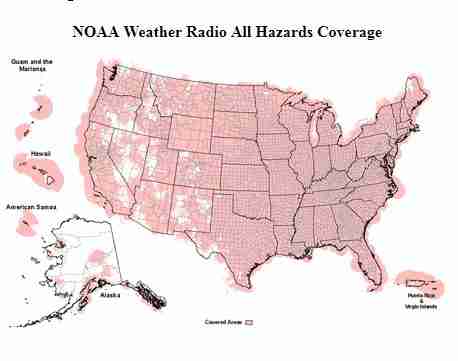


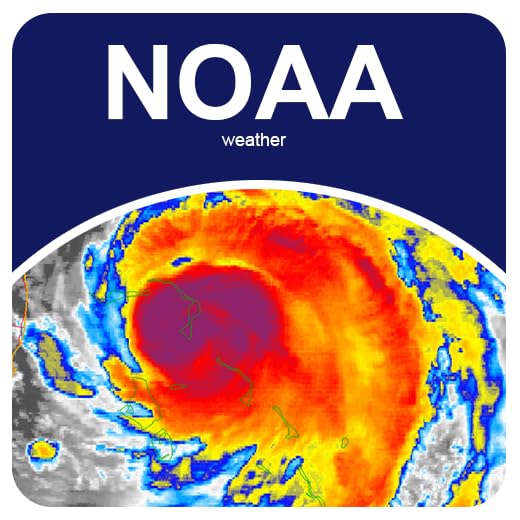

![[Upgraded Version] RunningSnail Emergency Hand Crank Self Powered AM/FM NOAA Solar Weather Radio with LED Flashlight, 1000mAh Power Bank for iPhone/Smart Phone](https://m.media-amazon.com/images/I/41z9C7JbIvL._SS520_.jpg)






